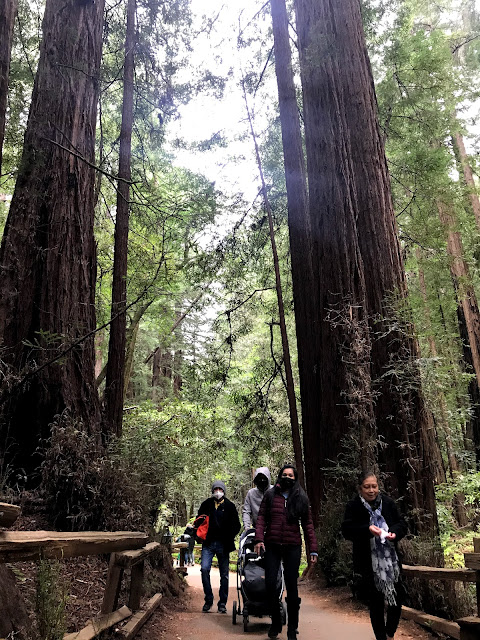A trip to the forest
Val has been wanting to go outdoors after more than a year of being restricted indoors (thanks to the COVID-19 pandemic and the ever-changing regulations on community quarantine in the Philippines). I decided to take him (and the rest of the family) on a road trip to the Muir Woods National Monument in Mill Valley. There was neither cell signal nor WiFi access in the woods so it was a good opportunity to really stay off the grid and relax.
I first visited the Muir Woods in 2015 with Ate Maddie. Back then, we could visit the park without getting reservations but finding parking was a challenge. Some people had parked on the side of the road already! This time, however, I had to buy our tickets and pay for parking before we went there. Perhaps, the ticket reservation requirement is enforced to limit the number of visitors as parking space and shuttle service are limited (and also, COVID-19).
As per usual, I took baby-wearing duties while Val pushed the stroller (with our personal belongings and our son's baon). I didn't want to leave anything to chance so I brought milk good for a full day and solid food good for three meals and two snacks... despite being at the park in the afternoon. The amount of baon led to Val lugging along a cooler and a lunch box, aside from a diaper bag.
Once inside the park, I was once again impressed. Muir Woods has coast redwoods (Sequoia sempervirens), some of the tallest and oldest organisms on Earth. The trees are able to reach great heights because of moisture brought in by the constant presence of coastal fog coming from the Pacific Ocean. The trees' towering heights also make the canopy quite dark. It's a good thing that we visited as summer approached; if we visited in late winter or early spring, our surroundings probably won't be as bright (and photogenic).
Mommy was very thankful that there was a boardwalk for visitors. Near the end of the trail, the path became asphalted. The paved walkway and the boardwalk made the two-mile walking loop easier for her (she's not a fan of hiking shoes). One of the signages that we passed by mentioned the rationale for the boardwalk: it was placed to keep the ground from getting trampled on by visitors; apparently, the section covered by the boardwalk is a fragile ecosystem.
Aside from the redwoods, we also saw cloverleaf-like foliage. Our visitors' guide pamphlet indicated that these are redwood sorrels (Oxalis oregana). The photo above shows that these sorrels provide ground cover on the right side of the boardwalk. We also found California spikenard (Aralia californica), a plant with white flowers, on the trail leading from the parking lot and into the visitors' centre.
I'm happy that the whole family enjoyed this trip to the forest. It was inspired by one of the action songs I sing to my son (albeit off-key) and a storybook that I've been reading to him during playtime.






Comments
Post a Comment
Thank you for dropping by!
Before moving on, please share your thoughts or comments about the post. :)
Thanks again!